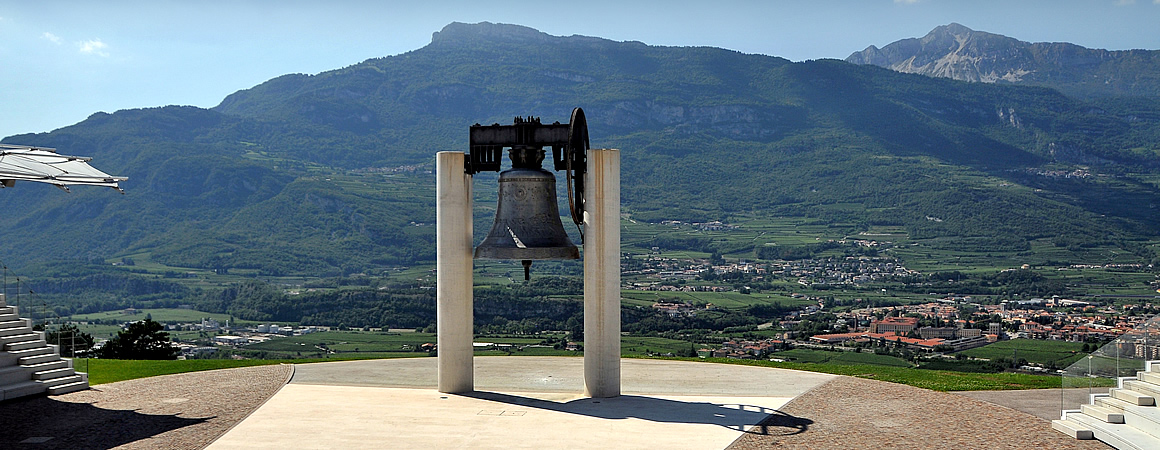As previously mentioned, while the Bell could be considered a success in aesthetic terms, the same could not be said for its sound.
By 1933 Don Rossaro had decided to have it recast and, furthermore, the wood-beamed structure that supported it had suffered a certain amount of deterioration, and could no longer withstand the swinging of the bell.
Primarily for this reason, on 21 July 1937 the Bell swung freely for the last time, and this was the first step towards its recasting, marked by the motto
“Post facta resurgo”.
From that day onwards, the bell was no longer swung by electric motor; the sound was made by manually moving the clapper, attached to a rope, while the Bell itself stayed still. On 2 November 1937 the Bell was rung for the last time. With solemn ceremony, the tolling of Maria Dolens rang out, as it had ever since 1930, but this was the last time. In the thirteen years since its inauguration, the Bell had rung 4,155 times, with more than 400,000 strokes. In his diary that day, Don Rossaro described the event with a brief concluding sentence: "...The final peal was moving: the undersigned gives a Roman salute and declares: Consumatum est!”. It was immediately necessary to fill the gap left by the evening ringing of Maria Dolens, and therefore the Municipality of Rovereto decided that the bell of the Civic Tower would replace the great Bell of the Fallen until its return. In the meantime, the Regency Board had examined proposals from a number of foundries and chosen to entrust the recasting to the Cavadini firm in Verona; after various difficulties, a contract was signed on 13 December 1937.
On 2 November 1937 the Bell was rung for the last time. With solemn ceremony, the tolling of Maria Dolens rang out, as it had ever since 1930, but this was the last time. In the thirteen years since its inauguration, the Bell had rung 4,155 times, with more than 400,000 strokes. In his diary that day, Don Rossaro described the event with a brief concluding sentence: "...The final peal was moving: the undersigned gives a Roman salute and declares: Consumatum est!”. It was immediately necessary to fill the gap left by the evening ringing of Maria Dolens, and therefore the Municipality of Rovereto decided that the bell of the Civic Tower would replace the great Bell of the Fallen until its return. In the meantime, the Regency Board had examined proposals from a number of foundries and chosen to entrust the recasting to the Cavadini firm in Verona; after various difficulties, a contract was signed on 13 December 1937.
On 8 March 1938, the Bell was detached from its supporting structure and slid down a sloping ramp to the edge of the castle walls by a squadron of the 4th Bolzano Army Corps, then allowed to fall over the edge so that it would break into pieces; however, the Bell plunged into the castle's moat, amazingly intact and upright . Following this setback. the bell was laid on its side and on 15 March it was broken up using mallets during a special farewell ceremony attended by pupils from the city's primary schools.
The bronze gave way in a large crack only after the third blow, and the bell was reduced to 85 pieces, which were taken to the Cavadini foundry in Verona to be reused in the new casting.






